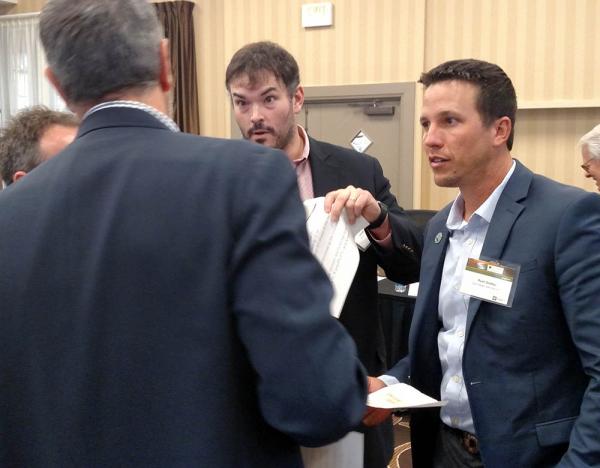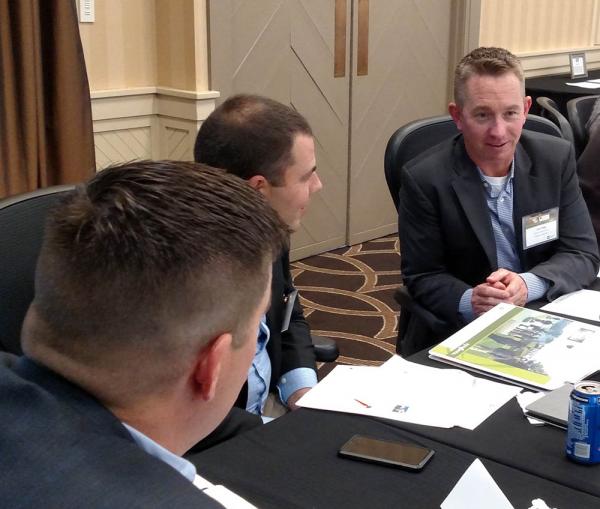Not many in a managerial position would care to admit that one of the reasons for poor employee performance sometimes might be staring back at them in the mirror.
T oo often, people are cast into managerial roles without the tools necessary for the job, says Sherry Moss, Ph.D., professor of organizational studies at the Wake Forest University School of Business.
oo often, people are cast into managerial roles without the tools necessary for the job, says Sherry Moss, Ph.D., professor of organizational studies at the Wake Forest University School of Business.
 oo often, people are cast into managerial roles without the tools necessary for the job, says Sherry Moss, Ph.D., professor of organizational studies at the Wake Forest University School of Business.
oo often, people are cast into managerial roles without the tools necessary for the job, says Sherry Moss, Ph.D., professor of organizational studies at the Wake Forest University School of Business."How do we get employees to do what we need them to do?" Moss said.
"Everybody who is promoted into a management position needs this kind of training that we are going to talk about. But unfortunately a lot of people don't get it, and a lot of people learn it through the school of hard knocks."
Her presentation was delivered to a room of 26 superintendents at the ninth annual Syngenta Business Institute. The 3 ½-day event held on the Wake Forest University campus in Winston-Salem, North Carolina is part of Syngenta's ongoing effort to grow the professional knowledge of golf course superintendents and assist them with managing their courses. Through a partnership with the Wake Forest University School of Business, the program provides graduate school-level instruction in financial management, human resource management, negotiating, managing across generations and cultural divides, impact hiring and other leadership- and professional-development skills.
Helping ensure peak performance among employees is the result of a multi-step formula that includes setting clear expectations, proper training, aligned incentives and providing all of these in the proper conditions.
If the process goes off the rails during any one of those steps, a project or the relationship between a superintendent and a team member could be irreparably harmed.
Employees want a strong leader who provides performance feedback. That is especially true of younger generations. But there is a wrong way and a right way to provide feedback. In fact, although feedback, when delivered correctly, can have an immense influence on employee performance, Moss said. Not all bosses know, or care to know the right way to communicate feedback to get the most from their employees. In fact, feedback, Moss said, has an equal chance of having no effect or even a negative effect as it does a positive effect, because of how, when and where it is delivered.
Different manager types use feedback differently, and there are three types of managers that use negative reinforcement, says Moss. They are the conflict avoider, zero-tolerance manager and the micromanager. While all operate differently, their tactics often can produce similar undesired results.
Conflict avoiders often can distort their message - when they get around to delivering it. Zero-tolerance managers usually are too emotional and micromanagers who see just one way of doing things - their way . . . or else.
The session was an eye-opener for John Ballard, CGCS at the University of Louisville Golf Club in Kentucky.
 "I think I learned more about my own leadership style," Ballard said. "I'm one of those people who it's my way or the highway. I learned that it's ok for people to be different, and there are different ways to manage."
"I think I learned more about my own leadership style," Ballard said. "I'm one of those people who it's my way or the highway. I learned that it's ok for people to be different, and there are different ways to manage."Even rewards for positive behavior can carry negative consequences, or reinforce unwanted behavior. According to Moss, using incentives to intentionally produce a desired behavior can lead to diminished performance, encouraging unethical behavior or shortcut, promoting short-term thinking and it can become addictive.
Still, feedback can be a helpful tool . . . if used properly.
"It's always nice to evaluate yourself. That's important," said David Groelle, superintendent at Royal Melbourne Country Club in Long Grove, Illinois. "As you listen to (Moss), you're obviously thinking 'where do I fall in this?' And I think evaluating my management style can also help me understand why things don't go the way I want them to sometimes. Now that makes more sense."
To help maximize employee performance, Moss said, constructive feedback should be: specific and descriptive, focus on behavior, not on the person, use good timing, compare performance to a standard, not to a person, specify replacement behavior, manage emotions and should be delivered in person. After all, no one wants to be yelled at in front of their peers.
One of the key tools Moss unleashes each year at SBI is a way of providing feedback known as the DASeR Approach, which is an acronym for "describe the exact behavior", "acknowledge how the behavior makes you feel or affects you", "specify the desired replacement behavior" and "reaffirm the value of the employee and their ability to change their behavior".
This approach can be unfamiliar territory in the "get good, or get gone" world of golf turf management. As younger superintendents, like 39-year-old Carlos Arraya of Bellerive Country Club in St. Louis, enter the market, there is a shift toward a more synergistic style.
"This has taught me to embrace my leadership style, which is a lot more collaborative," Arraya said. "It's encouraged me to be more collaborative and continue the path I'm on."

